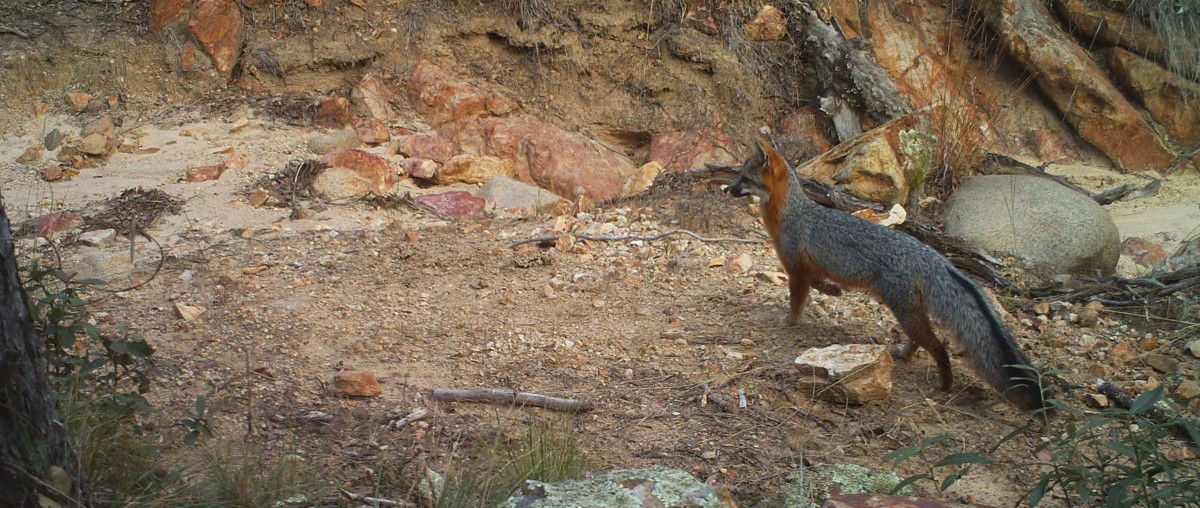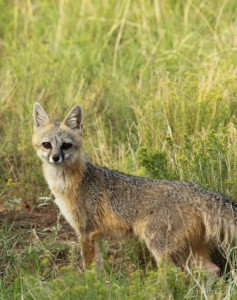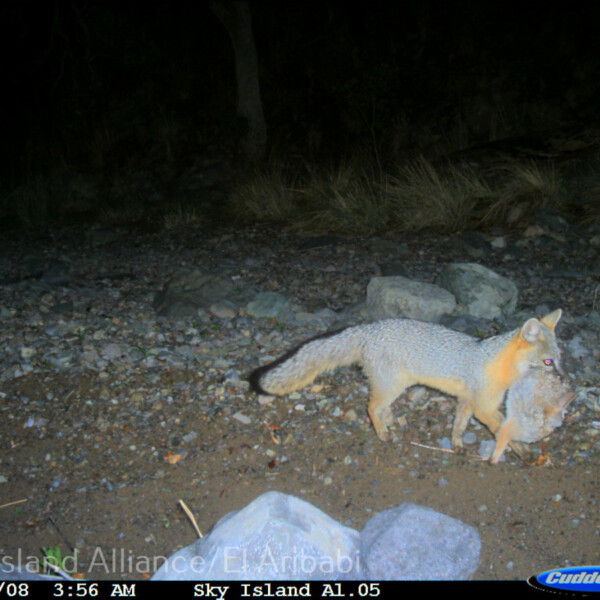Two fox species have been detected in the Sky Islands. One of these—the gray fox—is this week’s Friday creature feature! The gray fox is considered an urban-adapted species and is one of the animals listed on our FotoFauna checklist. So, grab a cup of something good and let’s learn!
Description:
While the name “gray fox” (Urocyon cinereoargenteus) may conjure up visions of a small, all-gray canine, the gray fox is actually a lot more colorful than that. Its fur is both gray and rust colored, and it has a black-stripped tail.
The gray fox weighs between 5 and 9 pounds—for perspective, this is lighter than your average cat and about as much as a Pomeranian or Chihuahua—and is considered one of the larger fox species in the Sky Islands. It is also the most detected fox species in the region.
Foxes are part of the Canidae (dog) family. The gray fox is special from other species: it is the only one that can climb trees. Gray foxes have booked claws and use them to scale tree bark while hunting for prey or escaping nearby predators, like bobcats, owls, hawks, or coyotes.
Habitat:
The gray fox prefers to live in mountainous or woodland areas, places that can provide them shelter from predators and access to ample food and water sources. The gray fox is found throughout North America, Central America, and parts of South America.
Behavior:
The gray fox is nocturnal but can also be spotted during the daytime. This species prefers to live and raise families in dens made in fallen trees, caves, or abandoned mine shafts. The gray fox communicates through barking, growling, and using the scent glands on their paws and face to mark their territory.
Gray foxes are solitary creatures but do pair up and raise their young (called kits) during mating season. They typically stay with the same mate for the entire season, which runs from December to March. Most litters produce four or five kits. Born in the spring, kits rely on their parents until they’re 10 months old. Around this time, they will leave their parents to find a mate of their own.
In the wild, a gray fox can live an average of 6 to 8 years.
Diet:
The gray fox is an opportunistic eater and feasts on whatever is available. This species has been known to hunt small prey, like birds, lizards, rodents, and invertebrates, and may also eat carrion. They will also eat nuts, berries, and other fruits. Animal Diversity reports that “in the Sonoran Desert, the fruit of the California palm makes up a significant portion of their winter diet.”
Status:
The gray fox is found across North, Central, and South America in abundance. But while it is not currently listed as in need of conservation, the species is negatively impacted by the spread of zoonotic disease, sustained drought, and human intervention—like trapping and hunting.
Identification Tips:
Here are some traits to look for when identifying a gray fox:
- Gray fur with rust/orange highlights (adult); fluffy brown fur (kit)
- Short rust-colored legs
- Thin black stripe that runs from the inner eye to the mouth
- Thin black stripe that runs along the upper eye toward the ear
- Long tail with a black stripe running along the top






